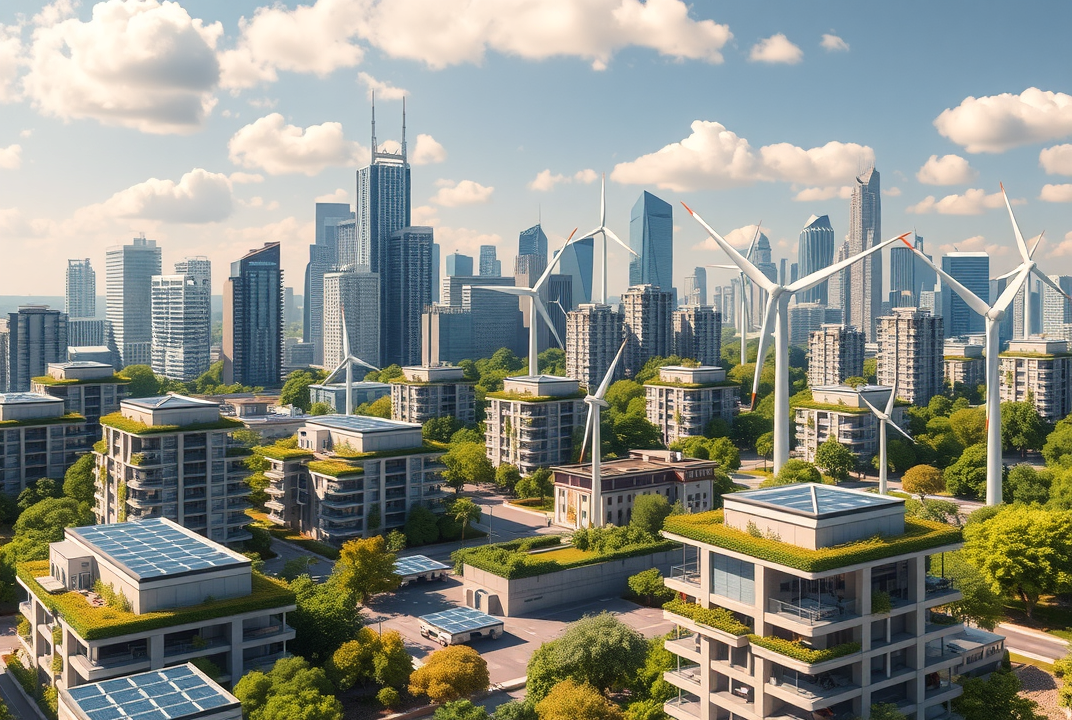Maximizing Urban Potential: Integrating Energy-Efficient Housing Programs into Urban Development

Introduction
Did you know that housing accounts for roughly one-third of global energy consumption? Imagine the transformative impact of integrating energy-efficient housing into urban development plans on a large scale. This change can address both economic and environmental challenges of our times.
In this journey, I'll guide you through the why and how of incorporating these sustainable housing programs into urban environments. From understanding the potential benefits to exploring successful case studies, we'll discover how cities can thrive while minimizing their carbon footprints. Ready to explore?
Why Energy-Efficient Housing Matters
Energy-efficient housing isn't just a buzzword—it's a necessity. These homes use significantly less energy for heating, cooling, and appliances compared to traditional buildings. This advantage not only conserves resources but also lowers utility bills for residents. Imagine slashing city-wide energy usage by up to 50%!
But energy savings aren't the sole benefits. Energy-efficient homes also improve indoor air quality and reduce greenhouse gas emissions. In urban settings, where pollution levels can be higher, this results in healthier living conditions. Who wouldn't want a cleaner, more sustainable city?
Key Components of Energy-Efficient Housing
Let's dive into what makes a housing program genuinely "energy-efficient."
-
Insulation: Proper insulation keeps homes warm in the winter and cool in the summer, minimizing reliance on heating and cooling systems.
-
Energy-Efficient Windows: Designed to reduce heat loss and gain, these windows help maintain a comfortable indoor environment.
-
Renewable Energy Sources: Incorporating solar panels or wind turbines on buildings to harness natural energy.
-
Smart Home Technology: Use of energy monitoring systems to maximize efficiency and minimize waste.
-
Efficient Water Systems: Use of low-flow fixtures and rainwater harvesting to conserve water.
-
Sustainable Building Materials: Opting for materials like recycled steel or bamboo that require less energy to produce.
These components aren't just theoretical solutions. They are tangible methods that real urban planners can adopt today.
Integrating Energy-Efficiency into Urban Planning
So, how do we incorporate these components into our cities?
Policy Development
Governments play a vital role in driving energy-efficient housing programs. By establishing incentives such as tax breaks or grants, they can encourage developers to adopt sustainability measures.
Consider New York City, where green building codes and certifications are required for new constructions. This has led to the rise of neighborhoods that prioritize environmental consciousness.
Community Engagement
Successful integration requires more than policy. Engaging community members ensures that these programs address the needs and values of the people they serve.
Public workshops and forums can foster a shared vision, allowing urban planners and residents to collaborate on creating future city blueprints.
Innovative Design and Technology
Encouraging architects to think outside the box can result in innovative solutions. Look at the eco-friendly initiatives in Copenhagen, where cycling infrastructure and mixed-use spaces complement energy-efficient housing.
The marriage of technology and tradition can redefine how cities function.
Case Studies of Success
To illustrate how these concepts work in reality, let's peek into a few successful projects:
-
BedZED, London: Known as the UK's first large-scale, mixed-use sustainable community, BedZED uses a combination of unique building designs and green technologies. Energy consumption there is 45% less than the UK average.
-
Malmö’s Western Harbor, Sweden: This area is celebrated for its innovative urban planning, which incorporates sustainable housing technologies and green transportation initiatives.
These examples serve as blueprints for cities worldwide to follow.
Overcoming Challenges
Even though the benefits of energy-efficient housing are clear, challenges remain. High initial costs or regulatory barriers might stand in the way. But here's where a proactive approach comes into play.
The collaboration between governments, private sectors, and communities can lead to financial models that support initial investments. Meanwhile, revisiting regulations can help support innovation rather than hinder it.
The Future: Moving Towards Sustainable Cities
The future of urban development promises a world where energy-efficient housing becomes a standard rather than an exception. The integration is not just a goal but a necessity for climate resilience and sustainability.
Doesn't it feel inspiring to envision a world where every urban area thrives in harmony with the environment?
Conclusion
Energy-efficient housing offers a tangible path towards more sustainable and economically viable urban centers. By embracing these programs, cities can lead the charge to reduce carbon footprints while improving living standards.
It's time to take action. Communities, policymakers, and industry leaders must unite to transform these visions into reality. Together, we can push boundaries and reshape our cities to promote both prosperity and sustainability.
Ready to join this movement? Let's take that first step today!

